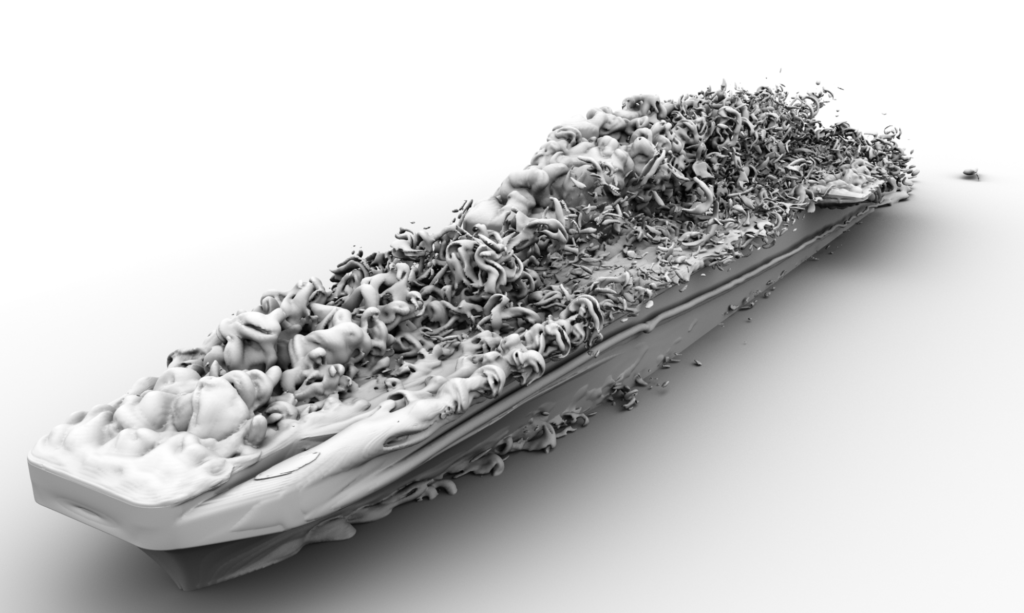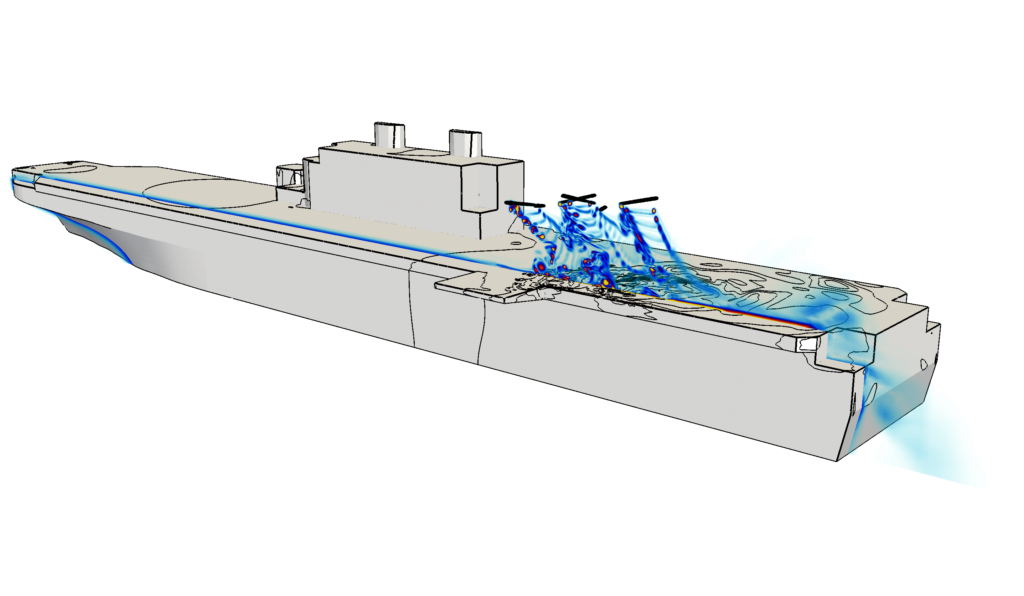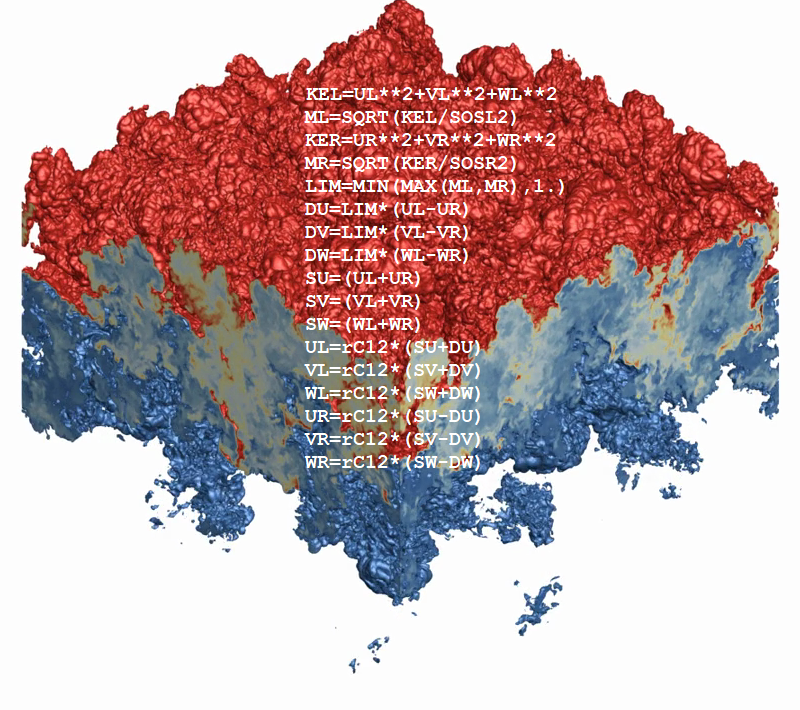The group uses several compressible and incompressible computational fluid dynamics (CFD) and direct simulation Monte-Carlo (DSMC) codes that have been developed in-house over many years.
Flamenco
The in-house Computational Fluid Dynamics (CFD) code at the University of Sydney called FLAMENCO (Flow Analysis and Modelling Environment with Combustion) is a massively parallel fully compressible structured multi-block solver with RANS, LES and DES models. The base numerical methods employed range from first through to fifth order spatial accuracy and up to third order accurate in time. The underlying algorithms have been validated extensively in complex flows such as turbulent mixing problems, scramjet intakes, aero-acoustics of cavity flows, shock-boundary layer interaction, rocket nozzles, ship airwakes and combustion. Recent advances have included new governing models for DNS of compressible mixing of two dissimilar gases (J. Comput. Phys, 2018).
The image on the right shows ‘the quarter-scale case’ from the recent theta-group paper published in Phys. Fluids (2017, 2019), superimposed on top is a code snippet for the low Mach modification.
For more information, please contact Assoc. Prof. Ben Thornber
PUFFIN
PUFFIN is an incompressible flow solver that is used for direct numerical simulations (DNS) and large eddy simulations (LES). It incorporates a suite of dynamic LES turbulence models including dynamic Smagorinsky, dynamic mixed and dynamic reconstruction models. PUFFIN uses a staggered mesh and has the capability to solve in both Cartesian and curvilinear coordinate systems. PUFFIN is parallelized using Message Passing Interface (MPI).
The video on the right shows simulations done using PUFFIN of mixing due to surface cooling in a thermally stratified open channel. We are using these simulations to investigate the breakdown of thermal stratification in river flow.
The upper panel shows temperature, while the lower panel shows vorticity.
The simulations are at a Reynolds number of Ret = 660, based on the friction velocity at the solid lower surface. This corresponds to a bulk Reynolds number of Reb = 15,000. The grid uses 1152 x 768 x 264 = 175 million grid cells, Computations were run in parallel on 288 cores of the Raijin supercomputer.
For more information please contact: Assoc. Prof. Michael Kirkpatrick.
Mixing due to surface cooling in thermally stratified open-channel flow
OpenFOAM
OpenFOAM is a free, open source CFD software with an extensive range of features to solve anything from complex fluid flows involving chemical reactions, turbulence and heat transfer, to acoustics, solid mechanics and electromagnetics. We have made significant advancements to the capability of the version of OpenFOAM used at Sydney University. This includes the incorporation of our Actuator Surface Model and Immersed Boundary Method. Both of these are designed specifically for high Reynolds number flows. Our second thrust is in the development of fast and accurate methods for computational aeroacoustics based on a novel compressible fractional step method. Several example applications of these algorithms are shown in the Applied Aerodynamics tab. We also collaborate with the Clean Combustion group, who lead the integration of the MMC model into OpenFOAM,
The images on the right hand side show a computational aeroacoustics study of a DrivAer model (top), vorticity in the atmospheric boundary layer over the deck of a Navy ship (middle), and a CH-47D hovering over the deck of a Navy ship (bottom).
Image credits: M. Cvengros (Master’s thesis, Sydney/KTH) & Dr. Daniel Linton



